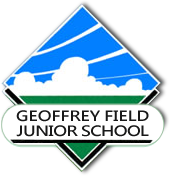Design Technology
Design Technology Curriculum at Geoffrey Field Junior School
The aim of our Design Technology curriculum
At Geoffrey Field Junior School, we understand the importance of design and technology in the world around us. We want to give our children a range of opportunities to explore and develop their skills in the process of investigating, designing, making and evaluating. We believe that DT stimulates creativity and imagination through problem solving and the production of quality products, which we want our children to be proud of. We want to provide children with practical life skills they can take beyond the classroom by providing a range of opportunities within our DT curriculum and, in order to make learning meaningful, most of our DT units are linked to other areas of the curricu

lum. We also believe it is important for our children to have an understanding of how key events and designers have shaped the things we use and have today.
Our DT curriculum aims to ensure that our children:
- Have a secure knowledge of the key areas of DT (mechanisms, construction, textiles and food) as there are opportunities for them to revisit these areas over their time in KS2
- Have a secure understanding of the processes of investigating, designing, making and evaluating
- Are presented with more demanding content as they move through the school
- Can build on their prior knowledge when working on new DT projects
- Know how to work safely and independently
Our Design Technology curriculum
We want children to be confident and innovative in both their ideas and designs. Children will have opportunities to design purposeful products aimed at a particular group of people or individuals. They will have opportunities to develop their ideas through researching existing products, planning their products and evaluating their designs. Children will be taught to use a range of tools safely and explain why they have chosen a particular tool, method or material to make their product. As part of their evaluations, we want children to be able to suggest improvements and adapt their designs.
How is the curriculum organised?
Our DT curriculum is organised into units of work. Each year group will have 3 units of work over the year. These units cover the key areas of the DT national curriculum for KS2:
- Mechanisms – devices that can be used to control movement, light or sound
- Construction – how materials can be used, joined, adapted to strength or stiffened and reinforce more complex structures
- Textiles – creating and constructing using cloth and fabrics
- Food – how to plan, prepare and cook meals and understanding where food comes from
Built into these units will be a study of designers, architects and chefs that link to particular units.
Our DT Units of Work
| Year 3 | Year 4 | Year 5 | Year 6 | |
| Mechanisms | Pneumatics | Electrical | Cams and Gears | IT controlled |
| Construction | Tall towers | Cantilevers | ||
| Textiles | Textile containers | Clothing | ||
| Food | Nutritionally balanced dish |
Where food is grown World food |
Seasonal food Properties of foods Two course meal |
Growing, rearing and food production Meeting dietary needs Working to a budget Lunch and dinner |
| Designers and Architects | Tall buildings + architects |
Textile designers World cuisine chefs |
Cantilever bridges + engineers Cantilever buildings + architects Cantilever furniture + designers |
Fashion designers Milliners |
Each unit of work is split into 5 strands which helps pupils understand the processes of designing and making:
- Working safely – knowing how to use tools safely and to work hygienically and safely when preparing food
- Investigating – exploring and researching existing products to help understand how they are made and work
- Designing – developing ideas for a product for a specific purpose or user
- Making – using a range of tools and materials to make their product, adapting their designs and product as they make
- Evaluating – trying out their product to see how successful it is in meeting the purpose or needs of the user, suggesting further improvements they could make
There is a progression of the 5 strands from Y3 to Y6 so that, as children move through the school, they build on previous knowledge and skills and are given more demanding tasks.
Localised Curriculum
At Geoffrey Field, our localised curriculum is woven into our DT curriculum, to ensure we focus on areas of importance and barriers for our pupils.
- Cultural experiences and personal health and well-being – We feel it is important to equip children with life skills through our cooking units, teaching them a range of skills to be able to confidently cook a variety of savoury dishes and adapt these to suit dietary requirements. We also want to give children an understanding of where food comes from both locally and around the world.
- Vocabulary – children will be taught both technical words, (like pneumatic and cantilever) and words that will be useful in the subject, (like evaluate and criteria)
- Oracy – children are given opportunities to discuss their ideas and present their findings.
- Understanding of the wider world – we will compare the production and use of ingredients from different countries as well as comparing structures, towers and buildings from around the world.